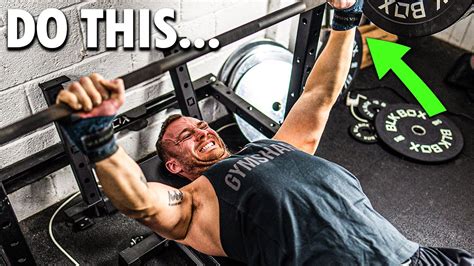How To Bench Press: A Comprehensive Guide to Building Strength and Muscle
The bench press. A cornerstone of any strength training program, a symbol of upper body power, and a fantastic exercise for building chest, shoulder, and tricep muscle. But mastering the bench press isn't just about throwing heavy weight around; it's about proper form, technique, and progressive overload to achieve optimal results and avoid injury. This guide will cover everything you need to know to bench press safely and effectively.
Understanding the Bench Press
Before diving into the specifics, it's crucial to understand why the bench press is so effective and what muscles it targets. The primary movers are the pectoralis major (chest), anterior deltoids (shoulders), and triceps brachii (back of the upper arm). Secondary muscles involved include the serratus anterior (along the rib cage), trapezius (upper back), and forearms. By targeting these muscle groups simultaneously, the bench press builds overall upper body strength and mass.
Setting Up for Success: Proper Form and Technique
Proper form is paramount to avoid injuries and maximize results. Here's a step-by-step guide:
1. Lie Down and Set Your Feet
Lie on the bench with your eyes directly beneath the barbell. Your feet should be flat on the floor, providing a stable base. This helps engage your core and maintain proper body position throughout the lift.
2. Grip the Bar
Grip the bar slightly wider than shoulder-width apart. Experiment to find a grip that feels comfortable and allows for a full range of motion. Your grip should be firm, but not tense.
3. Unrack the Barbell
Unrack the barbell using a controlled movement. Keep your core engaged and your back flat against the bench. Avoid jerking the bar.
4. Lower the Barbell
Slowly lower the barbell to your chest, touching your sternum (breastbone). Keep your elbows slightly tucked in, but not directly against your sides. This will help protect your shoulder joints. The descent should be controlled and deliberate, taking around 2-3 seconds.
5. Press Up
Explosively press the barbell back up to the starting position, extending your arms fully but avoiding locking your elbows. This explosive upward movement will maximize muscle engagement and generate more power.
6. Rerack the Bar
Once the barbell is back in the starting position, carefully rerack it, using a controlled movement.
Variations of the Bench Press
While the standard bench press is excellent, variations can target specific muscles and add variety to your workouts:
Incline Bench Press: Emphasizes upper chest.
Decline Bench Press: Emphasizes lower chest.
Close-Grip Bench Press: Emphasizes triceps.
Dumbbell Bench Press: Allows for a greater range of motion and improved muscle activation.
Programming Your Bench Press
Progressive overload is key to continuous improvement. This means gradually increasing the weight, reps, or sets over time. Start with a weight you can comfortably lift for 8-12 repetitions. As you get stronger, increase the weight or the number of repetitions. Consider incorporating variations of the bench press into your workout routine to stimulate different muscle fibers and avoid plateaus.
Common Mistakes to Avoid
- Arching your back excessively: This can put undue stress on your lower back.
- Bouncing the barbell off your chest: This reduces the effectiveness of the exercise and increases the risk of injury.
- Using too much weight: This can compromise your form and lead to injury.
- Not engaging your core: This reduces stability and can lead to injury.
Conclusion
Mastering the bench press is a journey, not a destination. By focusing on proper form, progressive overload, and incorporating variations, you can build significant upper body strength and muscle mass safely and effectively. Remember to listen to your body, prioritize proper form, and enjoy the process!
